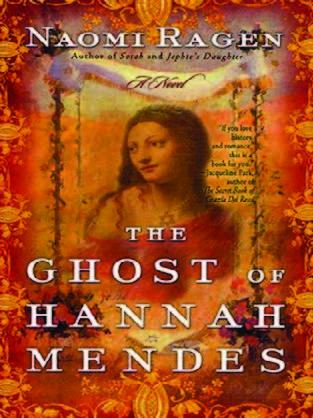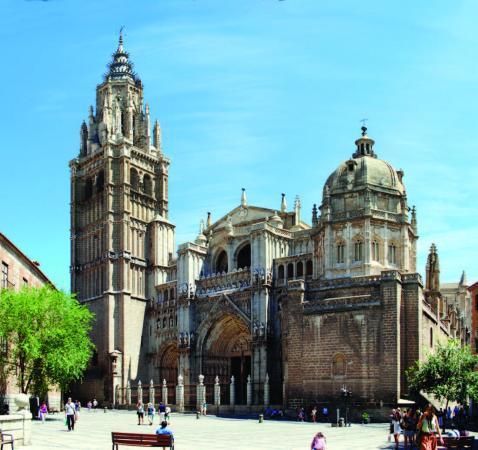In a special interview, author Naomi Ragen talks to Nathan Jeffay, about a unique heritage trip — the trip that allowed her to write one of the most remarkable Jewish historical fictions ever published.
By Nathan Jeffay
The Ghost of Hannah Mendes is probably one of the most captivating Jewish historical fictions around. After finishing the 380 pages readers are left with a question — how did the author manage to transport them so vividly back to the Europe of half a millennium ago?
In the book Naomi Ragen tells her story in fragments that her descendents, cast as contemporary Americans, find
during their family heritage quest. Her heroine, Mendes, was an exceedingly wealthy secret Jew — Marrano — whose family was expelled from Spain but who adhered to her faith in private, and saved many other secret Jews from the Inquisition.
The highlight of the book is a series of scenes from 16th century Spain contained in the fragments. They are part of the imagined memoir of Mendes — a real historical figure.
“I said to myself, ‘I need to know something about what the Jews of Spain left behind at the Expulsion, so I went
to see,” Ragen recalls. So she and her husband left their Jerusalem home, with plane tickets and a book by the famed Jewish historian Cecil Roth about her protagonist. “I decided that I would travel to all the places that she went to.” She “wanted to see the towns where Jews lived, the squares where they had auto-da-fés, the life before the Inquisition, the beauty of the place, and why Jews flourished.”
Spain
Spain
Surprisingly, she found it easy to feel the link between modern Spain and the country in the Expulsion era. “Every place I went in Spain, I really felt some kind of spirit hovering over me. I felt the pain of the Jewish people over me in the Jewish quarters emptied of Jews.”
Winding the clock back to an unimagined past as she stood at sites wasn’t always as difficult as she expected. In some cities old Jewish quarters “haven’t changed that much, and wherever you go are Jewish artifacts.”
Ragen’s trip was exactly what she needed for the novel. “I wanted to bring the past in a vivid way to my characters, and make them meet in a lively vivid way with their ancestors,” she says.
Sites helped her to understand the utter tragedy of a community that managed to curry favor with the country then finding itself spewed out. For example, in Granada, at the Alhambra Palace, stands the Fountain of the Lions,
which the Jewish community presented to the city’s conquest in 1492. In that same place where the Jews displayed such loyalty, the expulsion edict was signed. “It’s a sad contrast, and one that really gives you a sense of what the expelled Jews gave up, and the pain of he edict.”
Toledo further helped her to understand the attachment that Jews felt to Spain when they were expelled. In this city the connection had a very special aspect — its residents considered it reminiscent of Jerusalem, even calling it “Jerusalem of he West.” No amount of book research could compare to seeing the likeness herself, she says.
Her visit to the city helped bring her to the conclusion that the edict was an event of almost Biblical proportions. “For the Jews of Spain it was almost a second Exile.”
But as an author she needed to understand what was going on in the minds of history’s perpetrators and their sympathizers, as well as the victims. Toledo’s cathedral “blew my mind” in this respect. It exposed her to an important, but often overlooked, aspect of the expulsion, namely that while it has been remembered by the Jews as tragic, there were some who remembered it joyously. A plaque pays tribute to the supposedly heroic expulsion.
To get a sense of what the good times were like she ventured to Gibraltar, a British-ruled territory next to Spain,
which is renowned for its good inter-faith relations. It was “a picture of how things were gone in a golden age when Christians, Muslims and Jews lived together.”
With a publisher’s contract signed and a book to write, Ragen saw — and recorded in numerous notebooks — Jewish Spain with an intensity that few tourists will achieve. But looking back on her trip she says that it has left her with valuable advice for recreational travelers.
Firstly, leave any preconceived notions about what you will see at home, and don’t just book the holiday and say that you’ll read the Jewish history from the guidebook on the plane. “To go to Spain and not take knowledge with you is a shame — to go to a place with so much Jewish history you need to learn about it before you go, and you need to be open to allowing the history to connect inside you.” She adds: “There are ghosts of the past everywhere in Spain, and anyone with a little sensitivity can’t help but connect with them.”
Secondly, take advantage of her travel itinerary, which she has shared on her website.
Thirdly, don’t fall in to the trap of some Jewish travelers, who feel conflicted about appreciating and exploring the beauty and heritage of your destination as well as the Jewish story with all its sadness. “Any place you go in the world apart from Micronesia has seen some terrible experience for the Jews, so if you’re not going to appreciate Spain you’re not going to appreciate anywhere — including Jerusalem.
“It’s important to say that terrible things happened but still appreciate places as part of human history”.
See Ragen’s full itinerary and buy her books at www.naomiragen.com


